Please note that some aspects of the column below could be triggering.
Every few months, abortion “abolitionists” find their way back into Wichita. Folks from groups like Free the States and Abolitionists Rising crowded the Wichita State campus and downtown Wichita in March 2023, marching with graphic photos of stillborn babies. Now, they’re back, right here at the RSC.
Both groups identify as abolitionist movements, calling for the immediate criminalization of abortion. You won’t hear them say that, though. Instead of abortion, Free the States uses the terms “murder” and “child sacrifice” alongside Biblical theology to convey its message. Last March, the group was in town for a convention called “Bleeding Kansas.”
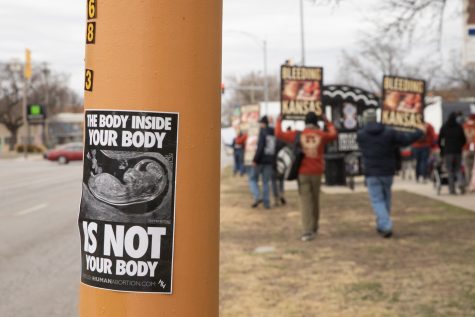
Sound familiar? If you’ve taken any American history classes, it should. Bleeding Kansas was a period of guerrilla warfare between slavery and anti-slavery forces in the 1850s. An important precursor to the Civil War, around 55 people died between 1855 and 1859.
Free the States, often using signage from Abolitionists Rising, uses similar vocabulary and patriotic imagery to tie the current situation of abortion in Kansas to the original Bleeding Kansas.
“College campuses are places where you really need to go to try to change people’s minds and hearts,” Russell Hunter, executive director at Free the States, told a Sunflower reporter in March 2023. Nicholas Heald from Abolitionists Rising came to preach the gospel this Tuesday, touting similar beliefs and graphic signs.
College campuses are an incredible place to capture the attention of large groups of people from different backgrounds and walks of life. But using this learning opportunity to show students photos with language that closes off any actual conversation. With their logic, how in any right mind are you going to be able to defend what is murder?
At the end of the day, we’re here to learn, whether that be through our classes or lively conversations with others, but the imagery behind Free the States is not conducive to learning in any way. If anything, it can be triggering to those who have gotten abortions for whatever reason or even those who have suffered from difficult or traumatic pregnancies.
Anyone who changes their opinion on abortion after seeing these gatherings is not going to have a solid understanding of abortion and why people choose to get it, which is important foundational knowledge whether they consider themselves pro-life or pro-choice. This is especially crucial in a state with such a complex history of abortion.
I understand why those who are anti-abortion are so passionate about proselytizing others into the movement. If you saw someone being murdered, you would be upset, too. There is such a fundamental difference in the definition of “life” and “murder” that it’s genuinely difficult to have constructive conversations between “pro-life” and “pro-choice” groups.
Free the States starts discussions by using horrific medical images to generate shock value. Nearly every sign is plastered with an incredibly graphic image of an alleged aborted fetus or babies at different stages of development.
These are horrible in their own right, but this purposeful selection leaves out essential factors within the abortion debate. The fetus should not always be the center of the conversation.
How would the conversation change if Abolitionists Rising used images of a child carrying the baby of her rapist? What if Free the States used a photo of a woman on her deathbed due to a terminal pregnancy case, cases where abortion is often permitted, even in states where abortion access is restricted?
According to the abolitionist groups, both of these all too common instances should be denied abortions. In their very own words: “No exceptions.” It’s a lot easier to say no to abortion when you’re looking at the face of a baby versus when you see the baby 10 years down the line, pregnant with a baby of her own. The images used purposefully avoid a large part of what makes the abortion debate so multifaceted and complex.
The pictures are juxtaposed with abolitionist language that is used to create a connection between slavery and abortion. Because no one is pro-slavery, right? How could you be pro-abortion or pro-“murder”?
I find it wildly disrespectful to make such a direct comparison between the two. Under the institution of slavery, more than 15 million people were victims of the transatlantic slave trade from 1500 onward.
Just because slavery was outlawed in the U.S. doesn’t mean that the effects of slavery aren’t still felt throughout the country, not only psychologically but through generational wealth. In a study conducted by the Pew Research Center, more than 80% of African American adults say that slavery still affects them today, with 59% saying that the legacy of slavery impacts them “a great deal.”
78% of Black adults say that America hasn’t done enough to give Black people equal rights with whites. Abolitionists Rising claims that “almost as many Black children are aborted as are born,” a tactic used by many anti-abortion groups to relate the high abortion rate among Black women to eugenics by agencies that perform abortions. In reality, racism is not the reason minority communities receive more abortions.
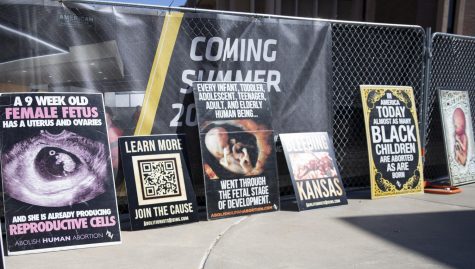
According to the Guttmacher Institute, the reason behind the high abortion rate is embedded in systemic racism and blocks women of color have in regards to accessing health care: “The truth is that behind virtually every abortion is an unintended pregnancy. This applies to all women—black, white, Hispanic, Asian and Native American alike. Not surprisingly, the variation in abortion rates across racial and ethnic groups relates directly to the variation in the unintended pregnancy rates across those same groups.”
It’s not a case of killing Black babies, as the sign from Free the States can lead people to believe. It’s a case of parents of color not being offered the same medical opportunities as white people.
A higher rate of unintended pregnancy reflects the difficulties that women belonging to a racial minority face in having consistent access to birth control. We still live in a world largely affected by racism, in everything from poverty to health care. Ignoring these factors to decontextualize facts is completely irresponsible.
Using the foundation of slavery abolitionists as a cultural reference to make a case for criminalizing abortion is incredibly tone-deaf and disrespectful to both people of color and those who have received abortions. Comparing people having abortions to slave owners is out of touch and an insane platform to build your anti-abortion case on, and definitely not a tactic that invites real and intelligent discussion and learning.
Either way, Wichita State should be free from Free the States. There is no justifiable reason for such graphic and out-of-context images to be broadly displayed on a college campus. No exceptions.



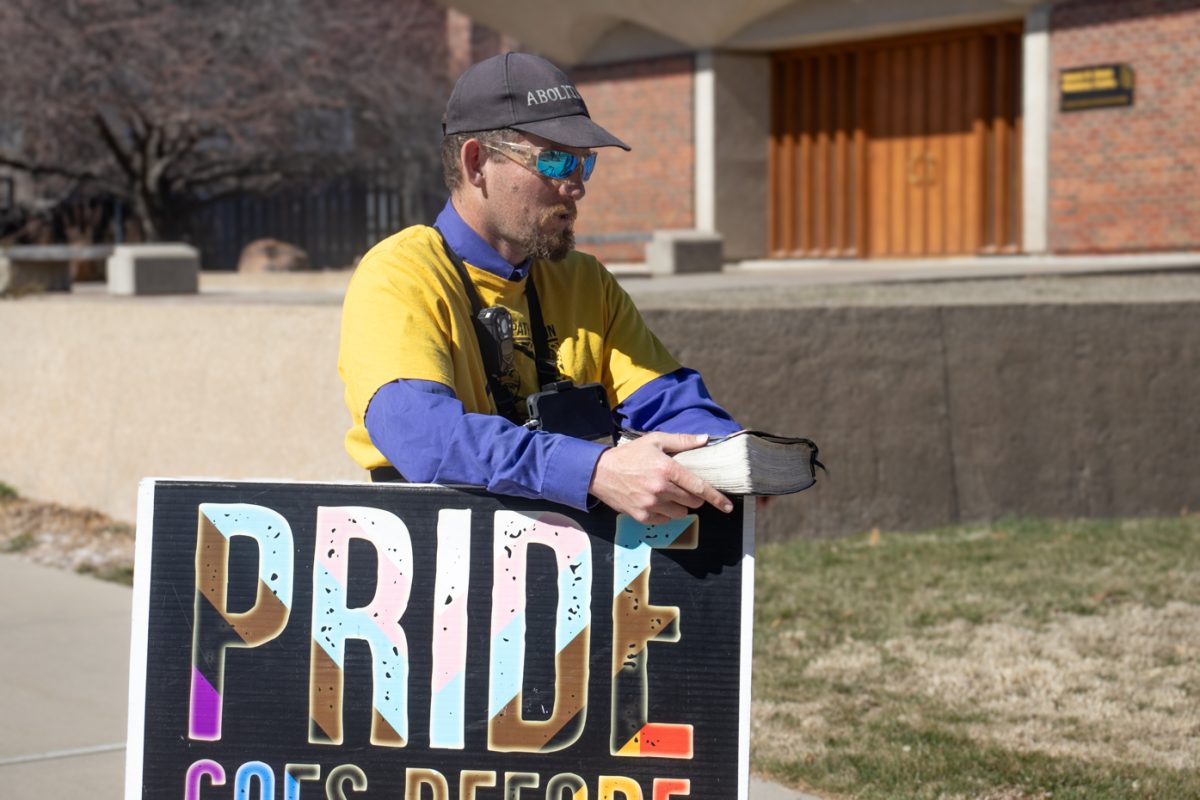
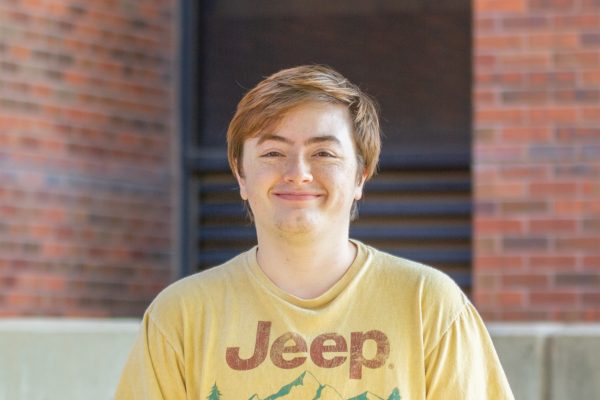
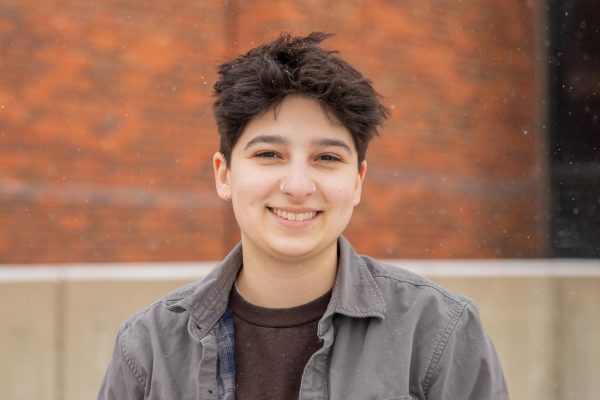
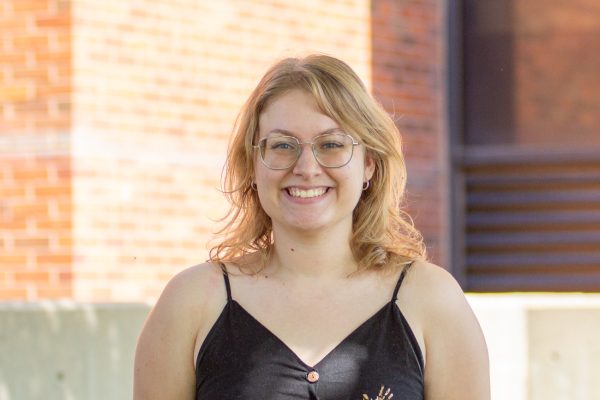
JL de Grasse • Feb 27, 2024 at 11:50 am
Thank you for writing this. I share your thoughts and feelings about these groups. There’s a sidewalk convergence just outside of the Rhat – between the north doors and the chapel – where proselytizing and promoting groups block and trap walkers. Irritating to avoid or try to break away (and the grass is being killed by people having to cut around the blockage).